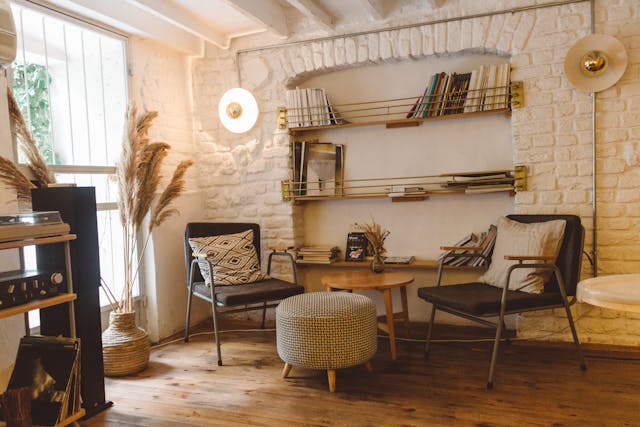Home improvement is an exciting and rewarding journey that allows homeowners to elevate their living spaces. It can range from simple aesthetic changes to extensive renovations that add value, improve functionality, and enhance the overall ambiance of a home. Whether you are preparing your house for sale or creating a more comfortable environment for yourself, this guide will walk you through some key home improvement strategies.
1. Focus on Curb Appeal: First Impressions Matter
The exterior of your home is the first thing people notice, and improving curb appeal can make a huge impact without requiring significant investment. Simple changes like painting the front door, adding stylish house numbers, or planting colorful flowers can transform the look of your home’s exterior.
Here are a few ways to boost curb appeal:
- Paint or Repaint: A fresh coat of paint can work wonders. Choose neutral tones for a timeless look, and consider painting shutters or doors in bold, contrasting colors to make a statement.
- Landscape the Yard: Trim bushes, mow the lawn, and plant low-maintenance shrubs or flowers to give your yard a manicured appearance. Mulching garden beds and adding a stone pathway can also create a polished look.
- Install Outdoor Lighting: Landscape lighting along paths and around key features like your front door or porch can add charm while increasing security.
- Clean or Replace Gutters: Well-maintained gutters not only protect your home from water damage but also improve the overall aesthetic.
2. Revitalize Interior Spaces with Paint and Lighting
A fresh coat of paint is one of the simplest and most cost-effective ways to breathe new life into a room. Paint can dramatically change the mood and style of any space, whether you opt for calm neutrals or bold accent walls.
- Choose Colors Wisely: Light, neutral colors can make a room feel larger and more inviting, while darker tones create a cozy, intimate ambiance. If you’re feeling adventurous, consider an accent wall in a complementary shade to create a focal point.
- Update Lighting Fixtures: Good lighting can transform a room’s appearance. Replace old or outdated fixtures with modern, energy-efficient options. Incorporate a mix of task lighting, ambient lighting, and accent lighting to add layers of brightness.
- Maximize Natural Light: Mirrors can reflect natural light and make a room feel more spacious. Place mirrors across from windows to maximize the effect, and consider adding sheer curtains to let in more sunlight.
3. Kitchen Upgrades: The Heart of the Home
The kitchen is often considered the most important room in the home, making it a top priority for improvements. A kitchen remodel can significantly boost your home’s value, but you don’t need to go all out to see big results.
Here are a few key upgrades to consider:
- Replace Cabinet Doors: Instead of installing new cabinets, consider painting or refacing the existing ones. Changing cabinet hardware to modern pulls or knobs can also give your kitchen a fresh look.
- Upgrade Appliances: Energy-efficient appliances not only look sleek but can also help you save money in the long run. Stainless steel, smart refrigerators, and ovens with touchscreens are popular choices that combine style and technology.
- Install a New Backsplash: Adding or updating a kitchen backsplash is a cost-effective way to add color and texture. Subway tiles, mosaic designs, or even peel-and-stick options are great ways to personalize your kitchen without a major overhaul.
- Create More Space: If your kitchen feels cramped, consider removing a wall or installing a kitchen island to increase workspace and storage. Open-concept layouts are highly sought after and can improve flow.
4. Energy-Efficient Improvements: Save Money and the Environment
Energy efficiency is not just a trend—it’s an essential aspect of modern home improvement. Upgrading your home’s energy efficiency can reduce utility bills, make your home more comfortable, and help the environment.
- Install Energy-Efficient Windows: Old, drafty windows are a major source of energy loss. Upgrading to double or triple-pane windows improves insulation and can lower heating and cooling costs.
- Use LED Lighting: Switching to LED bulbs is an easy and affordable way to reduce energy consumption. These bulbs last longer and use significantly less energy than traditional incandescent bulbs.
- Upgrade Insulation: Proper insulation is key to maintaining a comfortable indoor temperature year-round. Consider adding insulation in the attic, walls, or crawl spaces.
- Install Solar Panels: While the upfront costs are higher, solar panels can drastically reduce electricity bills over time and increase the value of your home.
5. Bathroom Renovations: Enhancing Functionality and Style
Like kitchens, bathrooms are high-value areas when it comes to home improvement. Even minor updates can transform your bathroom into a spa-like retreat.
- Upgrade Fixtures: Replacing old faucets, showerheads, and towel racks can instantly modernize a bathroom. Choose sleek, water-saving fixtures for a contemporary and eco-friendly update.
- Re-Tile or Re-Grout: Worn or outdated tiles can make a bathroom feel old and dingy. New tile flooring or a re-grouted shower area can make the space feel brand new.
- Add Storage Solutions: Floating shelves, wall-mounted cabinets, or under-sink organizers can create more storage space and reduce clutter, making the bathroom feel larger and more functional.
- Improve Lighting: Proper lighting in a bathroom is essential. Consider adding vanity lights, overhead fixtures, or even installing a dimmer switch for a more relaxing atmosphere.
6. Smart Home Technology: Convenience at Your Fingertips
Incorporating smart technology into your home can improve convenience, security, and energy efficiency. Today’s smart home devices are easy to install and can be controlled remotely via smartphones or voice-activated assistants.
- Install Smart Thermostats: A smart thermostat allows you to control your home’s temperature remotely, learn your preferences, and adjust heating or cooling based on occupancy, helping you save on energy bills.
- Smart Security Systems: From video doorbells to smart locks, there are numerous smart security options that let you monitor your home while away. Motion detectors, cameras, and alerts can give you peace of mind and deter intruders.
- Smart Lighting Systems: Control your home’s lighting through an app or voice command. Set schedules for when lights should turn on or off, and adjust brightness or color to match your mood.
Conclusion: Making Your Home Truly Yours
Home improvement is about more than just increasing property value—it’s about creating a space that reflects your personality, meets your needs, and enhances your lifestyle. Whether you’re planning a major renovation or focusing on small, impactful changes, every improvement makes your home a more comfortable and inviting place. With careful planning and attention to detail, you can turn your house into a home you truly love.







